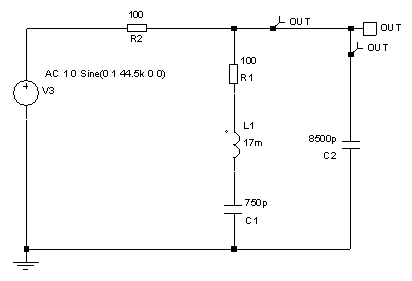ants
Full Member level 4

I want to run an opamp, the OPA458, with rails from a voltage divider, is this a good idea?
The setup is this:
Battery 6V : DC-DC booster 12V : Voltage divider +/-6V: OPAMP +/-5V :Transformer +/-5V: Load +/-50V
Also are the values for capacitance and resistance any good? I will use the values in the picture.
Thanks.
The setup is this:
Battery 6V : DC-DC booster 12V : Voltage divider +/-6V: OPAMP +/-5V :Transformer +/-5V: Load +/-50V
Also are the values for capacitance and resistance any good? I will use the values in the picture.
Thanks.


